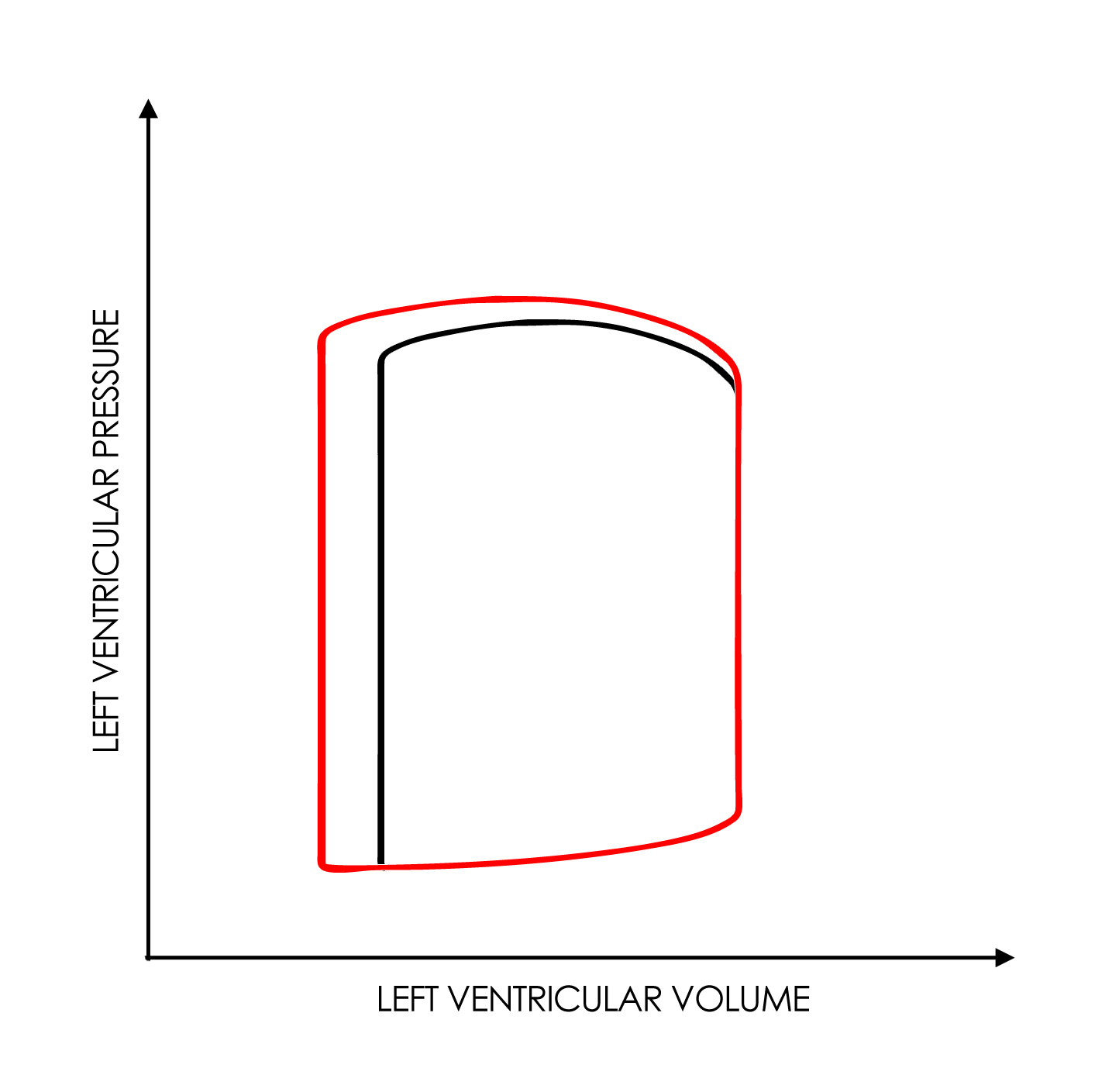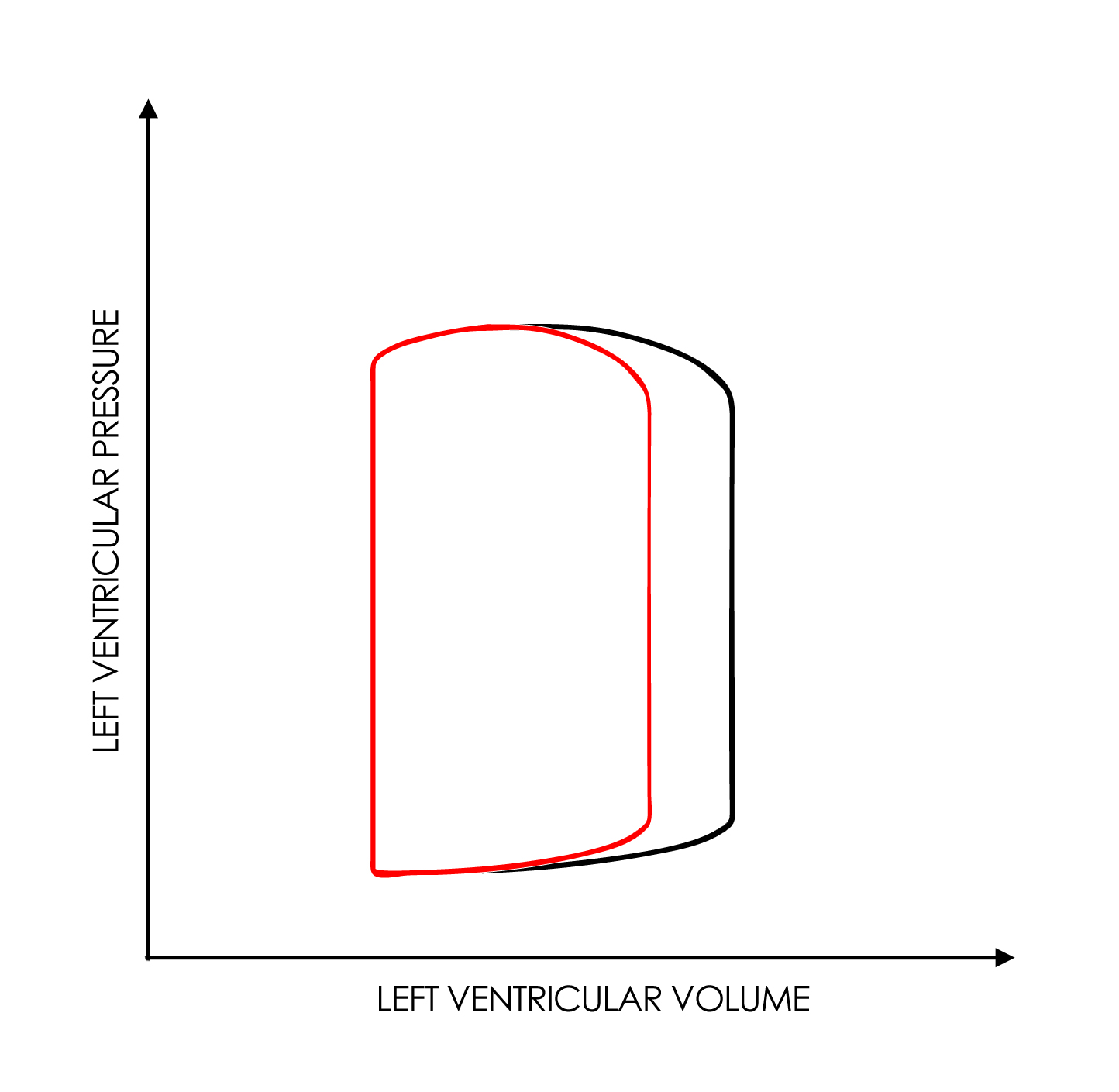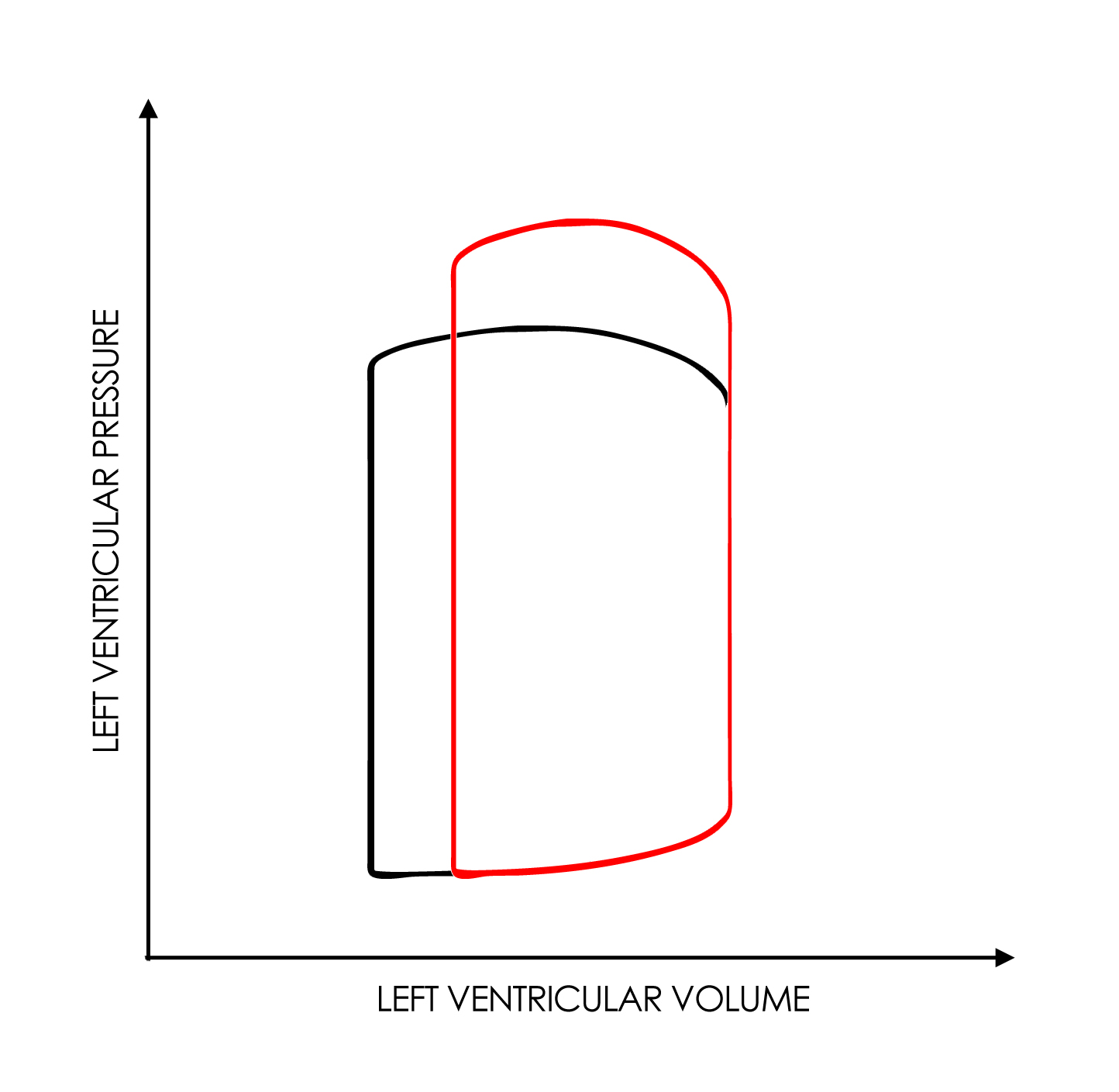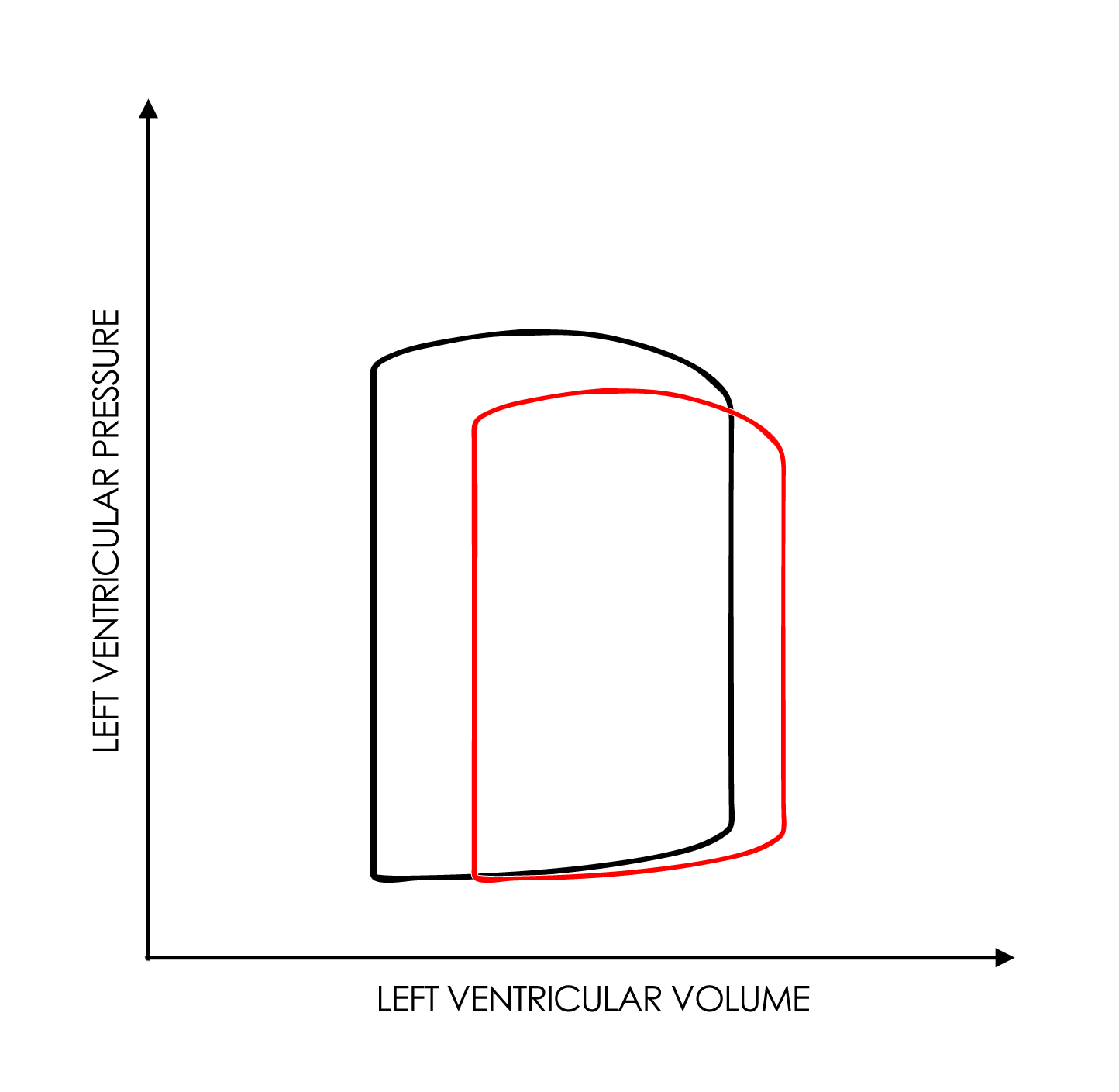WBR0549
| Author | [[PageAuthor::Rim Halaby, M.D. [1]]] |
|---|---|
| Exam Type | ExamType::USMLE Step 1 |
| Main Category | MainCategory::Physiology |
| Sub Category | SubCategory::Cardiology |
| Prompt | [[Prompt::A 21-year old female, presents to the physician's office with complaints of shortness of breath upon exertion. Lab workup demonstrates iron deficiency anemia, and appropriate therapy is initiated. Upon echocardiogram, you identify that she has a bicuspid aortic valve. Which of the following best represents her predicted pressure-volume loop at age 65 (red curve) compared to a normal individual (black curve)?]] |
| Answer A | [[AnswerA:: ]] ]]
|
| Answer A Explanation | [[AnswerAExp::This loop shows an increase in stroke volume due to increase venous return with associated decrease in afterload. This pattern is seen in large AV fistulae due to shunting of blood away from arterioles (decreasing peripheral vascular resistance and thus afterload) and into the veins (causing increase in venous return and thus preload).]] |
| Answer B | [[AnswerB:: ]] ]]
|
| Answer B Explanation | AnswerBExp::This loop shows an increase in end systolic volume compatible with increase in contractility. |
| Answer C | [[AnswerC:: ]] ]]
|
| Answer C Explanation | AnswerCExp::This loop shows a decrease in preload. It may be due to acute blood loss. |
| Answer D | [[AnswerD:: ]] ]]
|
| Answer D Explanation | AnswerDExp::This shows reduced ventricular stroke volume and increased afterload compatible with aortic stenosis which our patient is at high risk to develop later on in life given her bicuspid aortic valve. |
| Answer E | [[AnswerE:: ]] ]]
|
| Answer E Explanation | AnswerEExp::This loop shows increased end systolic volume and increased end diastolic volume with a decrease in afterload usually seen in patients with acute heart failure. |
| Right Answer | RightAnswer::D |
| Explanation | [[Explanation::
Bicuspid aortic valve (BAV) is a common congenital cardiac defect with an incidence ranging between 0.9% and 2.0% of the general population. BAV occurs due to abnormal valvulogenesis where 2 adjacent cusps fuse to form a single cusp. In the majority of cases, it is asymptomatic at an early age and either discovered incidentally, or after an episode of endocarditis. In older patients, aortic stenosis is the most common syndrome due progressive calcification of the valve. Approximately 50% of patients with severe aortic stenosis before age 70 have bicuspid aortic valves. The pressure-volume loop of aortic stenosis shows reduced ventricular stroke volume due to increased afterload with marked increase in ventricular systolic pressure. Educational objective: BAV usually causes early aortic stenosis with pressure-volume loop showing reduced ventricular stroke volume and increased afterload. References:
Sagawa K. The end-systolic pressure-volume relation of the ventricle: definition, modifications and clinical use. Circulation. 1981;63(6):1223-7.
Abdulkareem N, Smelt J, Jahangiri M. Bicuspid aortic valve aortopathy: genetics, pathophysiology and medical therapy. Interact Cardiovasc Thorac Surg. 2013;17(3):554-9. |
| Approved | Approved::No |
| Keyword | WBRKeyword::Aortic stenosis, WBRKeyword::bicuspid aortic valve, WBRKeyword::pressure-volume loop |
| Linked Question | Linked:: |
| Order in Linked Questions | LinkedOrder:: |